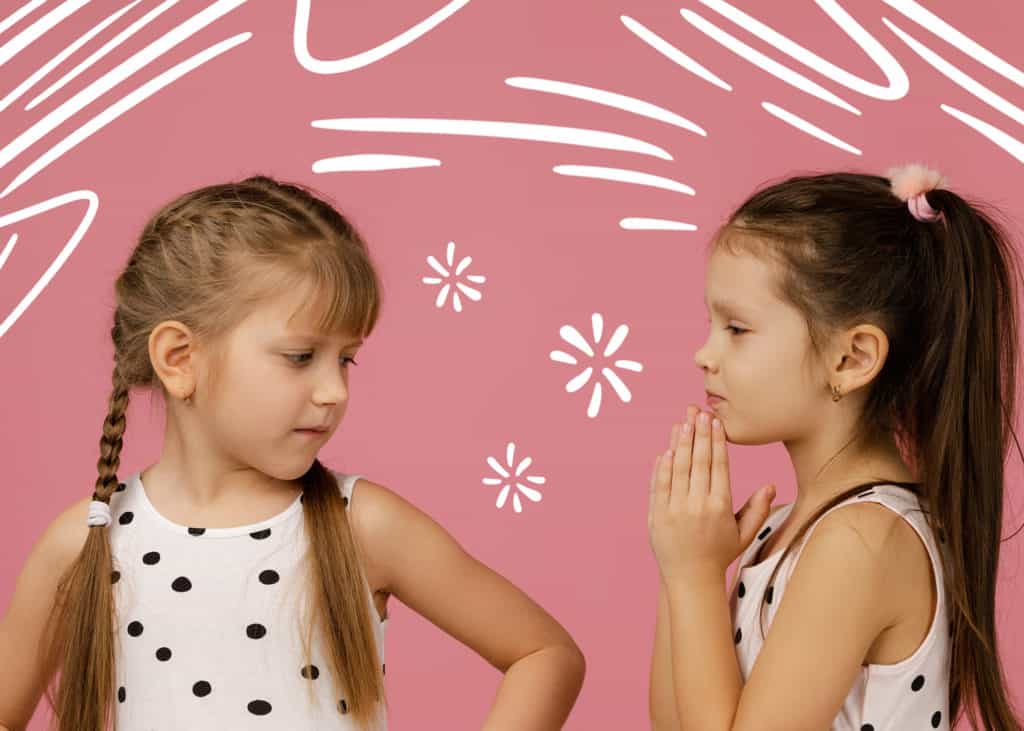
Family Estrangement: 6 Ways to Reconcile with Adult Children
You can move forward after a rift with your adult children by learning new ways to build trust and respect between you and your child.

God cares far more about our response after we sin. Luckily, He’s created an opportunity for us to choose repentance and forgiveness after we sin.
What do you feel when you realize you’ve messed up? Is it a mixture of regret and sadness? Or perhaps it’s a little bit of dread and worry about what’s next? There’s a big difference between understanding you need to repent and knowing how to repent.
Teaching our kids how to repent when they mess up and hurt others can be difficult. It’s a challenge to even help our kids to see there is a need for forgiveness.
Especially if your child has yet to express faith in Jesus Christ as their Savior, learning how to repent and forgive can help them understand God’s love for us. And even for kids who have already accepted Jesus Christ as their Savior, repentance is still essential to their lives. So, the first step in helping our kids learn to repent is to show them what repentance is and what it isn’t.
To help your kids understand repentance, begin with these two ideas.
Throughout your child’s life, there will be countless opportunities to obey or disobey. Whether it is a teacher at school, a family member, or an employer, he or she will have the choice between obedience and disobedience.
The same is true of their relationship with God. Obedience to God begins with following His commandments and extends to all areas of our lives. Show your kids that God wants the best for their lives. Then, help them see obeying Him is their best option.
Sin can be tricky to explain, especially to our kids. For all of history, humanity has struggled with sin and its effects.
But understanding sin is critical to a learning how to repent and forgive others.
A helpful definition of sin to share with your kids is choosing to do something God says not to do or not doing what God says to do. In other words, obedience and disobedience.
Also, sin doesn’t only involve God. When we sin, it can involve other humans as well. So, repentance has implications for us, others, and God. This can sound intimidating, and rightly so. God cares about our sin. However, He cares far more about our response after we sin. Luckily, He’s created an opportunity for us to choose repentance and forgiveness after we sin.
Throughout the Bible, repentance is commonly mentioned and reinforced as an important practice. On multiple occasions, Jesus encourages his followers to “Repent, for the Kingdom of heaven is at hand” and “repent and believe in the gospel.”
At other times, Paul teaches his followers to repent and forgive their neighbors: “…because you were grieved into repenting. For you felt a godly grief…” And he also writes to Timothy hoping that their, “…repentance leads to a knowledge of the truth…”
Whether we are repenting to God for our sin to receive salvation or because we’ve sinned against our friends, repentance involves awareness and intentional change. In the New Testament, the word ‘repentance’ directly translates to the idea of “change of mind” or “turning from our sin.”
This means that learning how to repent depends on an awareness of our disobedience and sin. Then, we must realize there is a need for change.
When explaining this idea to your kids, consider using dirty laundry as an illustration. Help them see that just as their dirty clothes begin to smell the longer they go unwashed, so too does their sin the longer it goes without repentance. Going further, when dirty clothes are hidden, they might go unnoticed for a while. But soon enough the smell will start to get worse. The same is true when you hide your sin or avoid repentance. At some point, something will reveal your sin.
To further illustrate to your kids how to repent consider this activity.
Sometimes unfamiliar terms like sin and repentance can be difficult for our kids to understand. Activities can effectively provide an opportunity for them to experience these ideas. For this activity, you’ll need a few of the following materials.
While you complete this activity with your kids, think of different illustrations or connections you can make along the way. Use your own experiences or situations involving your kids to help them understand their role in learning how to repent and seek forgiveness.
Whether you complete the activity or not, consider using the following steps to help your children understand how to repent and choose forgiveness.
Helping our kids to listen to the Holy Spirit requires consistent encouragement, as well as supporting them as they navigate their thoughts and feelings. Ask your kids intentional questions such as, “How did that make you feel?” or “How do you think your decision made ____ feel?”
Even our younger kids can experience guilt and regret. Often, that’s the first step in learning how to repent. The next is allowing God to use those feelings for change.
Psalm 139: 23-24 says, “Search me, O God, and know my heart! Try me and know my thoughts! And see if there be any grievous way in me and lead me in the way everlasting!” When your kids express feelings of sadness, hurt, or guilt, remind them that this is the Holy Spirit working in their hearts! Choose to encourage these feelings toward learning how to repent, rather than allowing them to continue to feel sad or guilty.
Next, begin to teach your kids how to apologize. Depending on the situation, this can involve friends or siblings. Or it might be a personal moment of apologizing between your child and God.
In speaking to believers, James writes: “Therefore, confess your sins to one another and pray for each other…” This can sometimes be the hardest part of learning how to repent, especially for our kids. Admitting that you’ve messed up and hurt someone requires humility.
In these moments, our role as parents can provide an example of how to model an apology and ask for forgiveness. Consider showing your child how to apologize by using a situation they can understand. From there, you can help them practice how to apologize to a sibling, friend, or even to God.
One of the key elements of forgiveness is the physical action of speaking. While our words carry power when written or typed, there is an even greater power in the face-to-face interaction.
When your child is ready to repent and seek forgiveness, encourage them to audibly speak their words in a face-to-face environment. Even in the Old Testament, God chooses a face-to-face interaction with his servant Moses: “Thus the Lord used to speak to Moses face to face, as a man speaks to his friend…”
The same is true for our interactions both with God and with others. Seeking forgiveness through a face-to-face interaction communicates how much you value the other person. Also, it will hopefully provide an opportunity for continued conversation if needed.
Remember the earlier explanation about obedience? Well, after you’ve learned how to repent and put that into practice, now is the time to choose obedience over disobedience.
Even though our children might make mistakes, learning how to repent and seek forgiveness can equip them for the rest of their lives. Understanding how to repent has positive effects for a variety of other areas of life such as dealing with temptation, conflict resolution, and relationships with others.